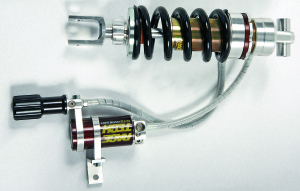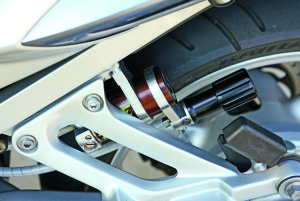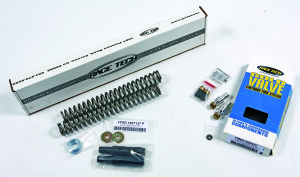Some things we are sure of. First, there are a lot of FJRs running around out there; second, with the sagging economy, FJR owners are probably holding onto their beloved bikes longer than ever; and third, many would welcome a tightening-up of their bike’s suspension systems. So, in conjunction with this month’s 2012 FJR1300 road test, we thought it would be interesting to explore one avenue of upgrades available for FJRs.
Our search led us to well-known suspension company Race Tech. Founder Paul Thede started his business back in ’84 by offering component upgrades and services to the motocross world. Today his product line and list of services addresses almost every facet of motorcycling. If you have a suspension need, they have something for it.

Upon dropping off our donor bike (an ’04 model registering 26,000 miles on the odometer) at the main service center in Corona, California, Race Tech basically threw its entire arsenal of upgrades at it. After installing one of its latest generation G3-S custom series shocks (Item #RSSYAk 01RRNR, $1,299) and totally rebuilding the front fork with one of its popular Gold Valve fork kits (Item #FMGV S2047C, $399), RT also replaced the stock barrel-type progressively wound springs with a set of Race Tech’s high-performance straight-rate springs (Item #FRSP S40331100, $114).
What sets Race Tech apart from other suppliers is its personalized service. For example, it custom builds its shocks to order from data you supply. You tell a service rep at RT’s main facility your bike’s weight, the rider’s weight and your style of riding. This info is fed into a database that allows RT to calculate the appropriate valving and spring rates for your particular circumstance. For example, the info we supplied to Race Tech was that our rider weighs 210 pounds, and he’s an aggressive, expert rider who likes to burn the twisties closer to home. It’s likely this application would require a shock with higher damping and spring rates (and stiffer fork springs as well) as opposed to the more conservative rider who rides longer distances.

Race Tech developed Gold Valve fork kits back in the early 1990s. The valves (which are a direct replacement for the compression and rebound valves in the stock cartridge fork) not only flow larger quantities of fluid, but flow through a shim valve stack, to which you can add or subtract shims—all designed to allow the altering of damping curves, with the ultimate goal of producing a fork action that’s both firm and plush. Valve kits come with a baseline stacking for each individual model and can be further modified during installation. The FJR’s stock compression, rebound and preload adjusters are all retained in the conversion, although Race Tech’s data sheet recommends different base settings as a starting point.
I think most owners are capable of replacing their own shock, but after watching Race Tech’s suspension tech, Tony Marasco, go through the detailed process of changing out the valves (and altering the shim stack) and springs, don’t even think about doing this yourself. Send your fork to Tony for a total overhaul, he’s the best.

With parts and service, we ran up a bill of just over $2,000, but we rode in on a SpongeBob bike and rode out on one ready to attack the road. What a transformation! Fork dive is softer, more controlled, and there’s very little chance of bottoming front or rear. And the bike has a really taut feeling now with total stability through the bumpy corners, something it was sorely lacking before. Admittedly, there’s an overall stiffer feeling traveling down the road, but that’s always been the price you pay for competency. Or maybe when I called in my specs, I was really just thinking a lot younger than my gray hair suggests.
For more information, visit racetech.com or call (951) 279-6655.
Learn more about the 2012 Yamaha FJR1300 by reading our Rider Test.
(This article Better Boingers was published in the December 2012 issue of Rider magazine.)








I know that the fjr is a SPORT touring bike but I always wished that it had a softer suspension with more travel like an adventure bike and now Yamaha makes the super tenere but that is no fjr. Is there an upgrade for me besides the vfr 1200 or any other bike. I love my fjr but not the sporty suspension. 2005 156,000 miles and going.